High-resolution Structural Magnetic Resonance Imaging and Quantitative Susceptibility Mapping
- PMID: 33237013
- PMCID: PMC7886008
- DOI: 10.1016/j.mric.2020.09.002
High-resolution Structural Magnetic Resonance Imaging and Quantitative Susceptibility Mapping
Abstract
High-resolution 7-T imaging and quantitative susceptibility mapping produce greater anatomic detail compared with conventional strengths because of improvements in signal/noise ratio and contrast. The exquisite anatomic details of deep structures, including delineation of microscopic architecture using advanced techniques such as quantitative susceptibility mapping, allows improved detection of abnormal findings thought to be imperceptible on clinical strengths. This article reviews caveats and techniques for translating sequences commonly used on 1.5 or 3 T to high-resolution 7-T imaging. It discusses for several broad disease categories how high-resolution 7-T imaging can advance the understanding of various diseases, improve diagnosis, and guide management.
Keywords: High-resolution 7 T; Hippocampus; Midbrain; Motion correction; Neurodegenerative diseases; Neuropsychiatric diseases; Quantitative susceptibility mapping.
Copyright © 2020 Elsevier Inc. All rights reserved.
Conflict of interest statement
Disclosures V. Yedavalli, P. DiGiacomo, E. Tong: no disclosures. M. Zeineh received research funding from GE Healthcare.
Figures
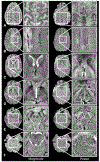

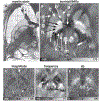
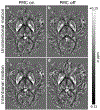
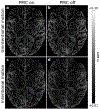


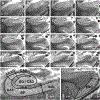



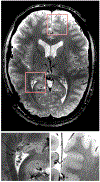







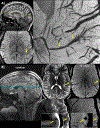









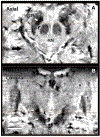
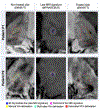

Similar articles
-
STrategically Acquired Gradient Echo (STAGE) imaging, part I: Creating enhanced T1 contrast and standardized susceptibility weighted imaging and quantitative susceptibility mapping.Magn Reson Imaging. 2018 Feb;46:130-139. doi: 10.1016/j.mri.2017.10.005. Epub 2017 Oct 19. Magn Reson Imaging. 2018. PMID: 29056394
-
Clinical 7 T MRI: Are we there yet? A review about magnetic resonance imaging at ultra-high field.Br J Radiol. 2019 Feb;92(1094):20180492. doi: 10.1259/bjr.20180492. Epub 2018 Nov 1. Br J Radiol. 2019. PMID: 30359093 Free PMC article. Review.
-
Toward in vivo histology: a comparison of quantitative susceptibility mapping (QSM) with magnitude-, phase-, and R2*-imaging at ultra-high magnetic field strength.Neuroimage. 2013 Jan 15;65:299-314. doi: 10.1016/j.neuroimage.2012.09.055. Epub 2012 Oct 2. Neuroimage. 2013. PMID: 23036448
-
Mapping the human brainstem: Brain nuclei and fiber tracts at 3 T and 7 T.NMR Biomed. 2019 Sep;32(9):e4118. doi: 10.1002/nbm.4118. Epub 2019 Jul 9. NMR Biomed. 2019. PMID: 31286600
-
Quantifying iron content in magnetic resonance imaging.Neuroimage. 2019 Feb 15;187:77-92. doi: 10.1016/j.neuroimage.2018.04.047. Epub 2018 Apr 25. Neuroimage. 2019. PMID: 29702183 Review.
Cited by
-
Diffusion Tensor Imaging Analysis Along the Perivascular Space (DTI-ALPS) in Normal Pressure Hydrocephalus: A Review of Recent Advances.Cureus. 2025 Apr 7;17(4):e81830. doi: 10.7759/cureus.81830. eCollection 2025 Apr. Cureus. 2025. PMID: 40337579 Free PMC article. Review.
-
Sensitivity of unconstrained quantitative magnetization transfer MRI to amyloid burden in preclinical Alzheimer's disease.Imaging Neurosci (Camb). 2024 Nov 25;2:imag-2-00367. doi: 10.1162/imag_a_00367. eCollection 2024. Imaging Neurosci (Camb). 2024. PMID: 40800521 Free PMC article.
-
Sensitivity of unconstrained quantitative magnetization transfer MRI to Amyloid burden in preclinical Alzheimer's disease.medRxiv [Preprint]. 2024 Jul 7:2024.04.15.24305860. doi: 10.1101/2024.04.15.24305860. medRxiv. 2024. Update in: Imaging Neurosci (Camb). 2024 Nov 25;2:imag-2-00367. doi: 10.1162/imag_a_00367. PMID: 38699343 Free PMC article. Updated. Preprint.
-
Diagnosis of children with attention-deficit/hyperactivity disorder (ADHD) comorbid autistic traits (ATs) by applying quantitative magnetic resonance imaging techniques.Front Psychiatry. 2022 Nov 17;13:1038471. doi: 10.3389/fpsyt.2022.1038471. eCollection 2022. Front Psychiatry. 2022. PMID: 36465303 Free PMC article.
-
Iron and Alzheimer's Disease: From Pathology to Imaging.Front Hum Neurosci. 2022 Jul 13;16:838692. doi: 10.3389/fnhum.2022.838692. eCollection 2022. Front Hum Neurosci. 2022. PMID: 35911597 Free PMC article. Review.
References
Publication types
MeSH terms
Grants and funding
LinkOut - more resources
Full Text Sources
Other Literature Sources
Medical

